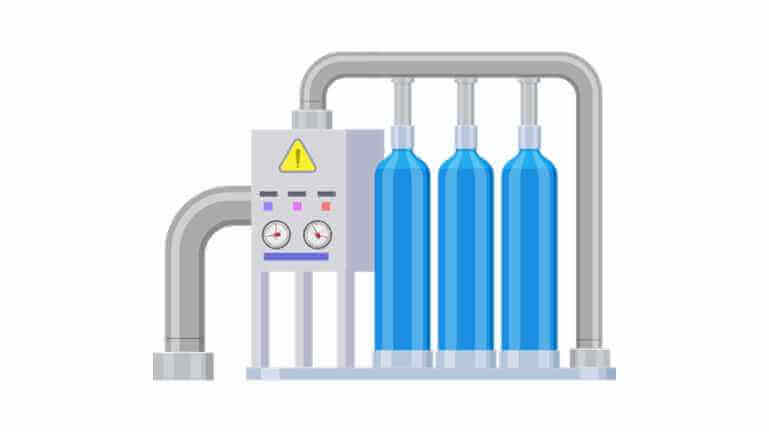Keeping a salt water filter clean is a crucial aspect of maintaining a healthy and efficient system. A clean filter ensures the smooth operation of the system, providing clean, safe water for various uses. This article aims to provide a comprehensive guide on the importance of a clean salt water filter, how to identify signs of a dirty filter, the risks associated with not cleaning the filter, and a step-by-step guide on how to clean a salt water filter.
Understanding the workings of a salt water filter is the first step toward maintaining it. This knowledge will help you identify when your filter needs cleaning and how to go about it. Furthermore, understanding the risks associated with a dirty filter will underscore the importance of regular maintenance.
By the end of this article, you will be equipped with the necessary knowledge and skills to maintain a clean salt water filter, ensuring its longevity and efficiency. Let’s dive in!
Key Takeaways:
- A clean salt water filter is essential for efficient water sanitation, ensuring clean and safe water.
- Signs of a dirty filter include reduced water flow, unusual noises, and cloudy water.
- Neglecting filter maintenance can lead to system damage, health risks, and increased costs.
Understanding Salt Water Filters
A salt water filter, also known as a salt water chlorinator, is a device that uses salt to produce chlorine for sanitizing pool water. The process, known as electrolysis, involves passing salt water through an electrically charged cell, which breaks down the salt (sodium chloride) into chlorine.
The chlorine produced is then used to kill bacteria and other harmful organisms in the water, making it safe for use. This process is continuous, with the chlorine eventually breaking down back into salt, ready to be reused. Therefore, a salt water filter is a cost-effective and efficient method of sanitizing water.
Maintaining a clean salt water filter is essential for its efficient operation. A clean filter ensures optimal water flow and chlorine production, providing clean and safe water. Regular cleaning also extends the filter’s lifespan, saving you the cost of frequent replacements.
Signs of a Dirty Salt Water Filter
Identifying the signs of a dirty salt water filter is crucial to maintaining a clean and efficient system. Some of the common signs include decreased water flow, unusual noises from the filter, and cloudy or discolored water.
Decreased water flow is often the first sign of a dirty filter. This is because as the filter collects debris and dirt, it becomes clogged, reducing the amount of water that can pass through. Unusual noises from the filter can also indicate a problem. When the filter is blocked, the system has to pump water with more effort, which makes more noise.
Cloudy or discolored water is another sign of a dirty filter. A clean filter should produce clear, clean water. Therefore, if your water is cloudy or discolored, it’s a clear sign that your filter needs cleaning.
Risks of Not Cleaning a Salt Water Filter
Failure to clean a salt water filter can lead to several problems. These include damage to the filter system, health risks from contaminated water, and increased maintenance costs.
A dirty filter can cause damage to the filter system. This is because as the filter becomes clogged with debris and dirt, the system has to work harder to pump water, which can lead to wear and tear. In severe cases, the system can break down, requiring costly repairs or replacement.
Using a dirty filter can also pose health risks. This is because a dirty filter is less efficient at sanitizing water, increasing the risk of waterborne diseases. Furthermore, a dirty filter can lead to cloudy or discolored water, which is not only unappealing but can also cause skin and eye irritation.
Tools Needed for Cleaning a Salt Water Filter
Cleaning a salt water filter requires a few basic tools. These include a filter wrench, a garden hose, a bucket, and a soft brush. You may also need a filter cleaner, which is a special cleaning solution designed for cleaning water filters.

The filter wrench is used to remove the filter from the housing. The garden hose is used to rinse the filter, while the soft brush is used to scrub off any stubborn dirt or debris. The bucket is used to soak the filter in the cleaning solution, if necessary.
It’s important to use the right tools for the job to avoid damaging the filter. For instance, using a hard brush can damage the filter’s delicate fibers, reducing its efficiency.
Pre-Cleaning Preparations
Before you start cleaning your salt water filter, there are a few preparations you need to make. These include taking safety precautions, preparing the work area, and turning off and disconnecting the filter.
Safety should be your top priority when cleaning a salt water filter. Therefore, make sure to wear protective gear, such as gloves and safety glasses, to protect yourself from any harmful chemicals or debris. Also, ensure that the area is well-ventilated to avoid inhaling any harmful fumes.
Preparing the work area involves ensuring that you have enough space to work and that all the necessary tools are within reach. It’s also a good idea to lay down a tarp or old towel to catch any water or debris that may spill during the cleaning process.
Step-by-Step Guide to Cleaning a Salt Water Filter
Cleaning a salt water filter involves several steps. These include removing the filter, cleaning the filter, inspecting the filter for damage, and replacing the filter if necessary.
The first step is to remove the filter from the housing. This is usually done by unscrewing the filter cap and pulling out the filter. Be sure to do this gently to avoid damaging the filter.
Once the filter is removed, rinse it thoroughly with a garden hose to remove any loose dirt or debris. If the filter is very dirty, you may need to soak it in a filter-cleaning solution for a few hours or overnight. After soaking, rinse the filter again to remove any remaining dirt or cleaning solution.
Cleaning the Filter Housing
After cleaning the filter, it’s also important to clean the filter housing. This involves safely removing the housing, cleaning it, and reassembling it.
To remove the housing, you’ll need to unscrew it from the filter system. Be sure to do this gently to avoid damaging the housing or the system. Once the housing is removed, rinse it thoroughly with a garden hose to remove any dirt or debris. If necessary, you can also use a soft brush to scrub off any stubborn dirt.
After cleaning, reassemble the housing and reinstall it in the filter system. Be sure to screw it in tightly to prevent any leaks.
Reinstalling the Filter
Once the filter and housing are clean, it’s time to reinstall the filter. This involves properly positioning the filter, reconnecting it, and testing it to ensure proper function.
To reinstall the filter, simply reverse the removal process. Place the filter in the housing, making sure it’s properly positioned. Then, screw the filter cap back on. Be sure to do this gently to avoid damaging the filter or the housing.
After reinstalling the filter, reconnect it to the filter system. Then, turn on the system and check for any leaks. If there are no leaks, let the system run for a few minutes to ensure the filter is working properly.
Post-Cleaning Maintenance
After cleaning your salt water filter, there are a few maintenance tasks you need to perform. These include checking for leaks, regularly monitoring filter performance, and scheduling the next cleaning.
Checking for leaks is important to ensure the filter system is working properly. To do this, simply observe the filter system while it’s running. If you notice any water leaking from the filter or the housing, it’s a sign that something is not properly sealed.
Regularly monitoring filter performance involves checking the water flow and the quality of the water. If you notice a decrease in water flow or a change in water quality, it’s a sign that the filter needs cleaning.
Tips for Extending the Life of a Salt Water Filter
With proper care and maintenance, a salt water filter can last for several years. Here are a few tips to help extend the life of your filter:
- Regular cleaning: Cleaning your filter regularly is the best way to extend its life. A clean filter works more efficiently and is less likely to break down.
- Proper use: Using your filter properly can also extend its life. This includes not overloading the filter with too much water and not using the filter when it’s not necessary.
- Regular replacement of parts: Over time, some parts of the filter may wear out and need to be replaced. Regularly inspecting the filter and replacing worn-out parts can help extend the life of the filter.
Common Mistakes to Avoid When Cleaning a Salt Water Filter
When cleaning a salt water filter, there are a few common mistakes to avoid. These include not turning off the filter before cleaning, using the wrong cleaning products, and not thoroughly rinsing the filter after cleaning.
Not turning off the filter before cleaning can lead to injury or damage to the filter. Therefore, always make sure to turn off and disconnect the filter before you start cleaning.
Using the wrong cleaning products can also damage the filter. Therefore, always use a cleaner that’s specifically designed for cleaning water filters. Avoid using harsh chemicals or abrasive cleaners, as they can damage the filter’s delicate fibers.
Conclusion
Maintaining a clean salt water filter is crucial for its efficient operation and longevity. A clean filter ensures optimal water flow and chlorine production, providing clean and safe water for various uses. Furthermore, regular cleaning can save you the cost of frequent filter replacements and costly repairs.
This article has provided a comprehensive guide on how to clean a salt water filter. By following the steps outlined in this guide, you can ensure that your filter is always clean and working efficiently. Remember, a clean filter is a happy filter!

Ross Walters, an Electrical supplies and Water Appliances specialist, shares his extensive expertise on top platforms. With a focus on empowering professionals and enthusiasts, Ross delivers up-to-date insights and practical advice. His commitment to staying abreast of industry trends establishes him as a trusted source for navigating the complexities of electrical systems and water appliances.

